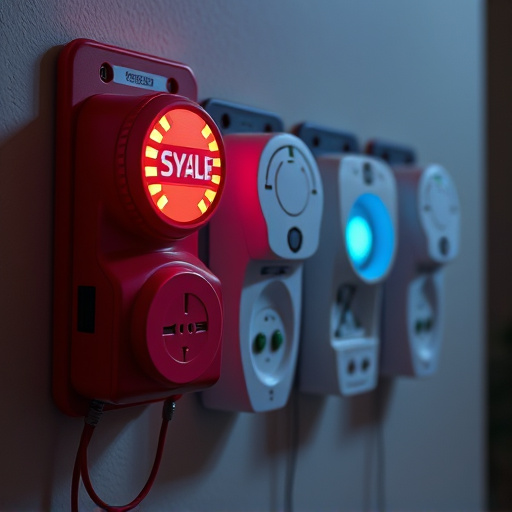Personal alarms offer college students essential outdoor security, deterring attackers with high-decibel sounds within a 100-foot range. Key features include a powerful Personal Alarm Sound Radius (at least 120 dB), water resistance, portability, and stun functionality. These devices should cut through campus noise to effectively communicate distress; practice usage and share location details for optimal safety.
Personal safety alarms are indispensable tools for college students, offering a sense of security while navigating campus life. In today’s digital era, where concerns about personal well-being are paramount, understanding the importance of these portable devices is crucial. This article explores why personal safety alarms are essential for students, delves into key features to consider when choosing an outdoor model, and provides best practices for optimal use on college grounds, focusing on the critical role of sound radius in effective alerts.
- Understanding Personal Safety Alarms: Why They Are Essential for College Students
- Key Features to Consider When Choosing a Personal Alarm for Outdoor Use
- The Role of Sound Radius in Effective Personal Safety Alerts
- Best Practices for Carrying and Using Your Personal Alarm on Campus
Understanding Personal Safety Alarms: Why They Are Essential for College Students
Personal safety alarms are compact devices designed to protect individuals in situations where they might feel vulnerable or at risk. For college students navigating new environments, these alarms can be invaluable tools for personal security. The primary function of a personal alarm is to deter potential attackers and draw attention to an individual’s location by emitting a loud and distinctive sound. This immediate response can startle assailants and alert nearby friends, campus security, or even law enforcement.
College students often spend significant time outdoors, whether walking between classes, studying in the library, or participating in campus events. Personal alarms are designed with a functional range in mind, typically emitting sounds within a 100-foot radius. This coverage area is crucial for ensuring that students can activate their alarm when needed, even if they’re far from immediate help. With just a quick press of a button, students can project a high-decibel alarm sound that effectively communicates distress signals to those nearby.
Key Features to Consider When Choosing a Personal Alarm for Outdoor Use
When selecting a personal alarm designed for outdoor use, several key features should be top of mind to ensure maximum safety and effectiveness. Firstly, consider the personal alarm sound radius. The range or distance that the alarm’s noise can reach is crucial; it should be loud enough to startle potential threats and attract attention from bystanders. A typical personal alarm for outdoor use offers a sound radius of 120 decibels or more, which is equivalent to the loudness of a power tool or a siren.
Additionally, look for features like water resistance, ensuring your alarm can withstand various weather conditions without failing. Portability and ease of carry are also essential; consider lightweight designs that clip easily onto bags or keys, allowing you to have it readily available when needed. Some models even include extra features like stun functionality or flashing lights, providing layers of protection beyond the powerful alarm sound.
The Role of Sound Radius in Effective Personal Safety Alerts
Personal safety alarms designed for college students need to consider the sound radius, especially when used outdoors. The audible range of an alarm plays a crucial role in ensuring its effectiveness during emergencies. In open spaces like college campuses, sounds travel further and can be easily drowned out by ambient noise from traffic, nearby buildings, or even multiple alarms going off simultaneously. Thus, a personal alarm should have a sufficient sound radius to cut through these noises and alert users promptly.
For optimal results, the alarm’s sound should reach beyond the immediate surroundings of the user. This means taking into account factors like wind conditions, temperature variations, and potential obstructions such as tall buildings or trees. A well-designed personal safety alarm for outdoors should emit a loud, distinct sound that can be heard clearly even in busy public areas, ensuring students can react swiftly to any potential threats.
Best Practices for Carrying and Using Your Personal Alarm on Campus
When carrying a personal safety alarm on campus, it’s crucial to ensure it’s easily accessible—keep it in a visible pocket or bag, so it can be quickly retrieved when needed. Practice using the alarm both indoors and outdoors to familiarize yourself with its sound radius and effectiveness. Many personal alarms offer loud, distinct sounds that can be heard up to 100 feet (30 meters) away, making them useful for drawing attention during emergencies.
Regularly test the alarm’s functionality by pressing the activation button to ensure it’s in working order. Additionally, familiarize yourself with campus safety protocols and let trusted friends or family members know about your personal alarm’s location and how to use it. This extra layer of preparation can significantly enhance your personal safety while on campus, both indoors and outdoors.
Personal safety alarms are indispensable tools for college students navigating campus life, offering a sense of security in an often unfamiliar environment. By understanding key features like sound radius and best practices for usage, students can ensure these devices serve their purpose effectively. Choosing the right personal alarm with optimal outdoor coverage can significantly enhance peace of mind and contribute to a safer academic experience.
